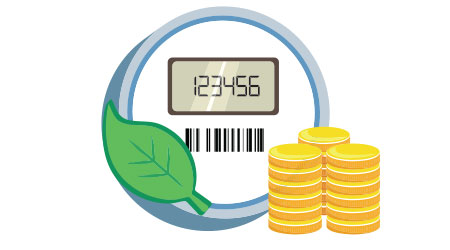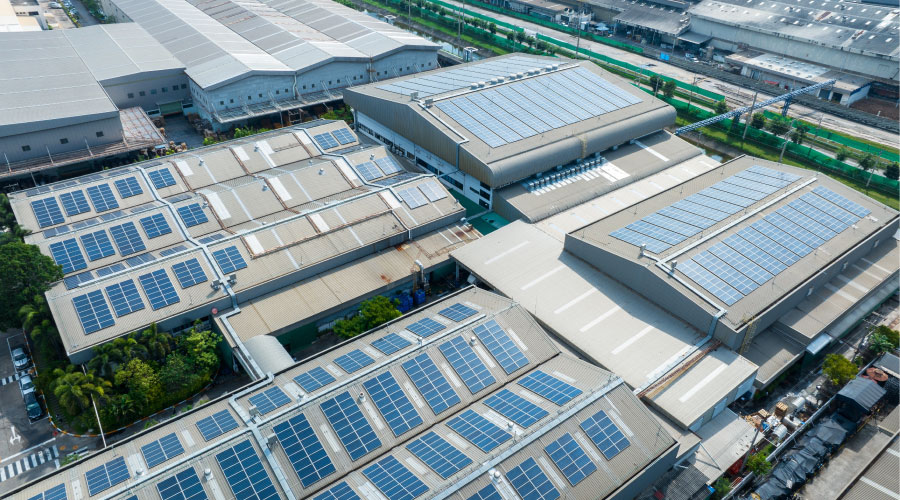Can Using Utility Meters Save Facilities Money?
Meters offer many opportunities for facility managers beyond what they've been traditionally used for. And the cost of meters is dropping due to technological advances.
For many facility managers, attention to electric metering stops at the utility bill: Meters show how much electricity was used, on which the bill is based. Smart facility managers, however, are finding ways to use metering technology and tariffs to secure low (or no) cost opportunities to cut their bills, save on maintenance, and reduce their environmental impacts.
Many facility managers use data from utility-owned meters to:
• Verify or challenge high utility charges, e.g., after the utility changes a meter
• Track and benchmark facility usage.
• Verify savings claims under energy efficiency performance contracts.
• Help calculate their carbon footprints.
• Create electric sub-bills for tenants, buildings, or divisions where utility meters for each already exist.
But additional opportunities exist, using both utility meters and customer-owned equipment, the cost of which is dropping due to technological advances, wireless and web-based communications, and standardization of data access protocols.
Utility meters: Necessary but not always sufficient
Utility metering data provides useful information about power usage and cost. But the information may be quite limited:
• Data are always at least a month old.
• Reading dates (and thus billing periods) may be inconsistent.
• Bills may show only total monthly usage and peak demand, even where several meters are in use.
• The date and time of that peak is rarely provided.
• Few utilities provide data on peaks above a defined kW level or their kW values.
• Same with reactive power (i.e., power factor) charges: no date, time, duration, or frequency of events are provided to unravel a potentially hefty kVAR charge.
Where a facility has multiple utility-owned meters, reading them more frequently is a handy way to see how loads vary across shorter time periods (e.g., day versus night, weekends versus weekdays). Doing so may determine which major loads (or portions of a facility) are “wagging the dog” by having an outsized impact on the overall utility bill.
Some customers have been stunned, for example, to see how much power they burn at night and on weekends when they thought most of their equipment was instead shut off. A large retail chain found that its automated lighting control system had failed, leaving store lights on overnight. A simple fix to scheduling and software resulted in a payback period measured in days, instead of years. A government facility had a similar experience when it found the time controller on the exhaust fans in its parking garage had failed, allowing them to run 24/7, consuming extra power and heating fuel. Once again, payback on fixing the problem was short.
While such monitoring may be done through daily manual meter reading, it’s much more efficient to do so automatically using devices that attach to utility meters and automatically report at customer-specified intervals. Some strap on to the outside of a meter, needing no utility permission. Others connect to meter pulse outputs, requiring opening the meter, with utility cooperation. The one-time cost to do so may be only a few hundred dollars per meter. Power flow is not interrupted.
Electric metering is in transition
Many utility meters are now, however, being replaced with “smart” units, obviating the need for such add-ons. Under the American Recovery and Reinvestment Act (ARRA) of 2009, a/k/a “the stimulus,” Uncle Sam paid utilities billions of dollars to smarten the electric grid. At the customer level, that paid for meters that automatically read and report usage via radio, web, or other non-human means. They measure and store data on power usage in short (e.g., 15-minute) intervals, while providing two-way communication between utilities and their meters.
Over the last decade, millions were installed, but many were not enabled to do much beyond laying off meter readers. In such cases, other strap-on devices exist to pull digital data from them in near real-time, reporting it to customers without utility involvement. Gradually, however, utilities are activating their smart meters and providing customers direct access to interval-based data.
By the end of 2017, about 76 million smart electric meters (42 percent of those in the United States) were installed.
That process has not been consistent: In some states, most meters are now smart while in others metering remains in the dark ages. Various efforts are underway to accelerate and geographically expand deployment, including a standardized data format (called Green Button) that allows widespread interchange and management. To avoid missing opportunities, facility managers should keep abreast of such changes through their utility account reps and consultants.
Related Topics:















